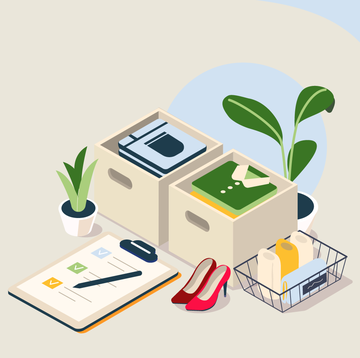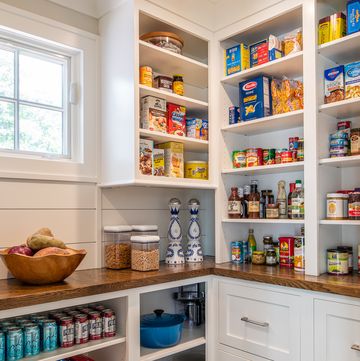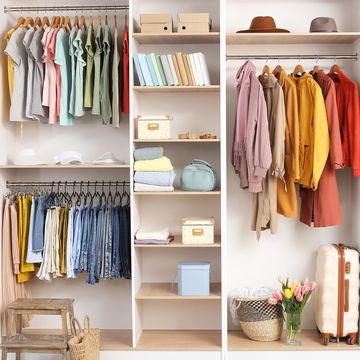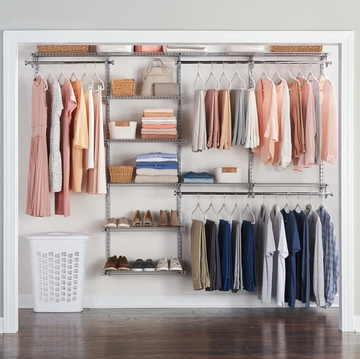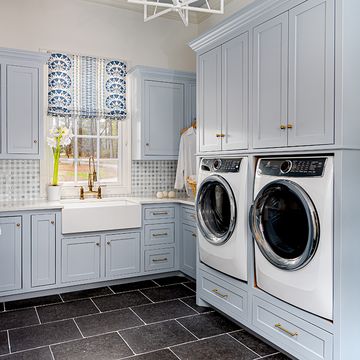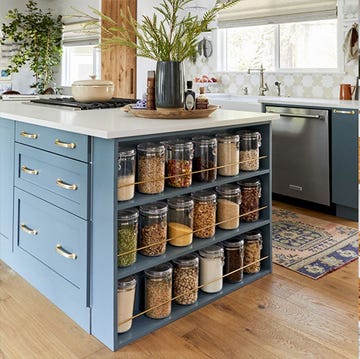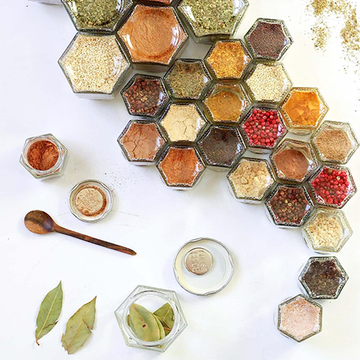We're pretty much in awe of what teachers tackle every day. They organize homework, plan crafts, orchestrate complicated lessons — and make sure dozens of students know exactly where their lunches are each day. So, we asked a handful of teachers (who teach grades from elementary school to high school) for their most effective organizing tips. We know they've got secrets, and now you can steal them:
1. Stick to one, solid system to stay organized.
Think about it: if you have a to-do list on your desk, a planner in your purse, and a message board by the phone, you'll actually creating chaos in your efforts to stay on top of things. "One big mistake I made was having one too many places to keep my days organized," says Christina DeCarbo, a second grade teacher who blogs at Miss Decarbo at Sugar & Spice. I now use one planner that holds all my events for all areas of my life. Now, I'm much better at managing my time and realistically setting expectations for myself."
2. Create one folder for each day of the month.
"In the classroom, I set up a filing cabinet using 31 file folders — one for each day of the month," says Stacey Hemphill, a third grade teacher (and mom of two) who blogs at Teaching Ever After. "I store away all of the worksheets, test copies and other paperwork I know I'll be using for each day." This sort of plan-ahead method can also keep monthly bills, events, and other to-do's super organized. Simply pull each day's folder in the morning, and assess what you've got going on for the day. A month worth of tasks will feel less daunting when broken down by day, too.
3. Have your kids help you decide what your organization system should be.
"It's important for my class to have a say in how our room is set up," says Stephanie Van Horn, a third grade teacher who blogs at 3rd Grade Thoughts. If your kids help you determine how to keep your home tidy, they'll be more empowered to actually use the system you implement. "There are about 30 students and one of me," says Van Horn. "I dole out a lot of leadership roles so I'm not the only person deciding if an area is cleaned up well or not."
4. Clean up messes before another one is made.
Hemphill also relies on this strategy. "When my own children want a new toy to play with, they have to clean up what they've already taken out and then I get another bin down," she says. "It really cuts down cleanup time — and frustration!"
5. Assign family members a color.
"At the beginning of the year, each student is assigned a number," says Hemphill."I also color-code everything by subject, and that helps me (and my students) stay organized."
At home, this system can help minimize confusion (but choose colors over numbers, lest you incite tantrums over who's number one). If your son knows that his backpack, juice cup, and bath towel are orange, he won't fight with his brother (who has, say, all green items) over whose stuff is whose as you're trying to get out the door. Plus, a flyer marked with an orange marker instead of green, makes it easy to know who has soccer practice tonight and who has a bake sale tomorrow.
6. Storage bins that match instantly make things tidier.
"I kind of have an obsession with matching containers," says Tiffani Mugurussa, a kindergarten teacher who blogs at Time 4 Organization. "When I first started teaching, I was guilty of having so many styles and colors, which made my room look cluttered."
7. Think "cubbies" when planning your entryway.
DeCarbo loves this classroom perk, since cubbies just have an inherent way of getting kids to organize. "If you don't have built-in cubbies at home, invest in some baskets and hooks to control coat and backpack clutter at the front door."
8. Don't hide important stuff.
Mugurussa used to have a tough time wrangling paperwork. "I found that if they were on my desk, they could easily get lost, or mixed in with others." Now, she pins important papers on the bulletin board behind her desk. "Having them pinned to the wall ensures they won't get lost, and it's a visual reminder of what I need to do."
9. Embrace the command center.
"I used to store classroom supplies all over — pens on my desk, crayons in a bin on one side of the room, and glue in another spot," says Brie, a high school special education teacher who blogs Breezy Special Ed. "It was a disaster. The students were so confused! Now, I have one location for everything and everything is labeled with both words and symbols so everyone know where everything goes."







